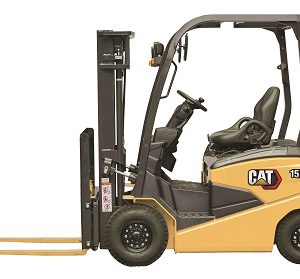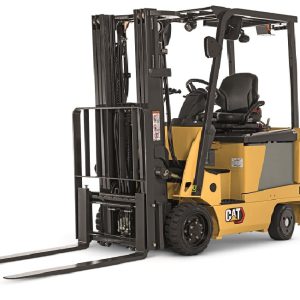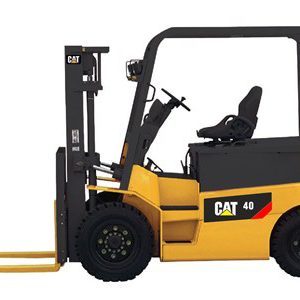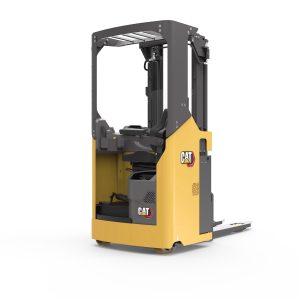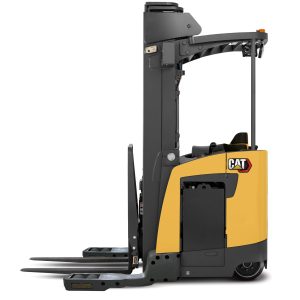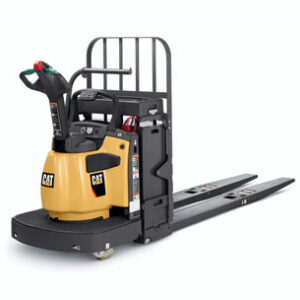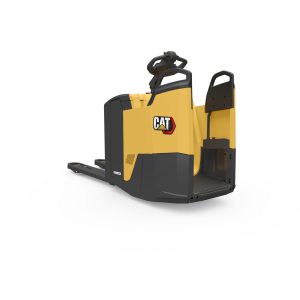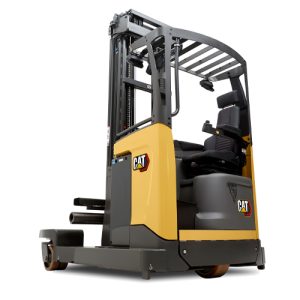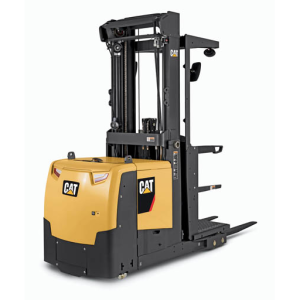
Lean Manufacturing: lessons for logistics
30/09/2020
Companies that will survive the current harsh environment will be those that strive to the utmost to survive and improve – and sometimes, it pays to look at others’ successful practices and adopt them. Several logistics companies are now looking at Lean Manufacturing in the quest to improve their processes.
Gian Schiava considers how logistics is getting Lean and has a closer look at 5S methodology.

- Improved Profits by eliminating waste
- Just In Time (JIT)
- 7 Wastes
– 5S
– Continuous improvement (Kaizen)
– SMED
– (Single Minute Exchange of Dies)
– Visual Management
– Mistake Proofing
– TPM (Total Productivity Management)
– Standardised Work - Preventing Reoccurrence
(Jidoka)
Quality and Productivity - Production Levelling
First, we need to have an understanding of what Lean Manufacturing is. Essentially, it is a management approach that endeavours to eliminate or reduce all activities that do not add value. The core idea is that, by making production ‘leaner’, product quality will improve and manufacturing costs should decrease. There is a strong focus on current activities and ways in which they can be made as efficient as possible. While the Lean approach and its various techniques are best known from Japanese examples, its origins can actually be traced back to British and American principles, as conceived by people like W. Edwards Deming and Henry Ford. However, it took decades before Western companies started to re-learn and implement the techniques and disciplines involved.
“The core idea is that, by making production ‘leaner’, product quality will improve and manufacturing costs should decrease.”
In any business area, a new thought process will be embraced by many new ‘gurus’ who will put their own spin on a concept. In some cases, this is merely a quest to become an opinion leader but, sometimes, a bright thinker will add new insights, which lead to a new management approach. Among the methods developed in the second half of the last century were Kaizen, Throughput reduction, Pull production, Line balancing, 5S, TQM, Quality Circles, SPC, PDCA (also called PDSA) and OEE. New ideas are quite possibly being added right now.
The Big Guns
We will have a closer look at 5S later, but we can safely say that all these approaches seek to identify problems, eliminate superfluous activity, reduce the total number of process steps or redesign the problem areas. Word of the success of these discipline-based methods soon spread and led to their wide adoption.
Six Sigma has become one of the bestknown quality management methods. It is about much more than just improving manufacturing; it shines a light on all business processes. It is founded on statistical process control (SPC), which calculates sigma (standard deviation) from three to six units, in 0.5 unit steps. It incorporates elements from Quality Circle programs and Deming-derived sampling methods. Deming’s approach contrasted focus on quality, which leads to rise in quality and fall in costs, with focus on costs, which leads to decline in quality and rise in costs.
Fixed procedures, which are founded on data collection, are used to solve problems. Six Sigma has a particular focus on customers and client satisfaction and the term is often heard within project teams. Large companies like General Electric, Motorola, Siemens, Caterpillar, Microsoft and Xerox have implemented Six Sigma.
“Deming’s approach contrasted focus on quality, which leads to rise in quality and fall in costs, with focus on costs, which leads to decline in quality and rise in costs. ”
Most methods use multi-functional teams, which investigate designated problem areas. Process steps are analysed and their costs are may also be determined – which is why financial representatives are often involved in the teams. Ultimately, recommendations will be made on the elimination, reduction or enforcement of the steps.
Lean logistics
Logistic professionals have thoroughly looked at these methods in the quest to improve logistic processes and the term ‘lean logistics’ began to be heard from the beginning of this millennium. It seeks to reduce stock as much as possible, to reduce the time taken in getting products from A to B and, in the meantime, to save as much costs as possible. The results vary from case to case. Working in a very disciplined manner, based on the sharing of all kinds of statistics and data, is something employees have to get used to. Whatever method is adopted, management has to lead by example. If they start getting sloppy, lessen the drive and seem to be losing interest, then everyone else will soon follow suit.
Some outstanding results have been achieved with the implementation of Kaizen, Visual Management and the 5S method. The panel alongside this article goes into detail about 5S, which aimed at the improvement of the work environment.
By optimising the surroundings of the employees, waste can be reduced and a foundation is made for improved quality. A wellorganized workplace has many advantages, including improvements in safety and better work, flowing from better organisation. It does not end: it is about continuous improvement, as is the case with Kaizen – which actually means ‘continuous improvement’. The system is actually based on a major clean-up. Sloppiness and lack of cleanliness lead to accidents. 5S demands a clean, well-organized and clear workplace. Safety will increase and the quality of the work will benefit accordingly.
All-round benefits
All of the above should lead to reduced set-up times, reduced cycle times, increased floor space, lower safety incident/accident rates, less wasted labour and/or better equipment reliability. It sounds really good, doesn’t it? It certainly can be too good to be true and there have been failures. Lack of leadership or management support leads to failure to sustain. An excess of ambition can lead to businesses trying to run before they can walk. Trying to go from a messy workplace to a LeanSigma enterprise in one leap is like trying to jump onto an express train as it thunders through a station at 100mph. It cannot be done, and disappointment leads to abandonment. Start with 5S and build from there.
Conclusion
Logistics professionals can learn from proven management methods in Lean Manufacturing. The rate of success will depend on adapting the ideas for the particular working area, and on persevering to ensure they are implemented. Nothing is impossible, but it only comes with hard work.
5S in detail
S1 – Seiri: Cleaning the work area
The key is to differentiate between what is necessary and what is superfluous. Eliminate all the objects that are not used or are just lying around. Keep everything you frequently use for doing the job. Usage frequency data are used to categorise objects on the shopfloor.
S2 – Seiton: Set in order
The systematic storage of objects, in such a way that everybody can have access to them quickly when needed. Ergonomics and hygiene are key words here.
S3 – Seis: Cleanliness and inspection
Clean all the floors, walls and objects (machines, tools, racking). Eliminate causes of incidents, disruptions or failures. Instigate methods of regular cleaning. Design responsibilities, rules and regulations.
S4 – Seiketsu: Standardise
Standardisation gives durability to the first three steps. Visual aids (graphs, signs) are often used to give quick insight into performance. Surprises, leading to unexpected reduction in performance, must be eliminated.
S5 – Shitsuke: Sustain
Probably the most difficult step. It is about ensuring that everything keeps on being implemented as intended. In this step audits, check lists and suchlike are developed. Regular evaluations or team meetings are necessary.
The real world:
Examples of 5S methodology in logistics operations:
1. DHL
The program adopted by the freight and packages forwarder in the Netherlands saw employees redesigning the work floor and rethinking existing methods of working. The focus in quality gained them the awards of ‘Safest Warehouse’ (in the Netherlands) and “Recognised for Excellence” from the European Foundation for Quality Management. The company also aimed at achieving ISO 9001, 14001 and 18001 quality standards.
2. Nedtrain
Nedtrain deals with all spare parts for the Dutch railroads and was one of three contenders for the Dutch title of ‘The Safest Warehouse’ for 2010. The jury report describes how the company strives to ensure the mechanics have nothing to worry about other than doing their jobs. In the previous three years, safety was made the priority in the warehouse and led to a reduction of 80% in accident rate. At the core of this achievement is the perfect execution of the 5S methodology. The 13 employees in the warehouse are very much involved in both day-to-day matters and longer-term decisions, and have achieved a very low absentee rate, of just 2.5%. The staff designed most of the workspace’s safety features themselves, right up to specially-designed load carriers. Nedtrain scores very well in personnel satisfaction surveys.
3. Boston Scientific
As a distributor of medical supplies, the sight of a very clean environment is not a surprise. The work floor is very well-lit – something often missing in warehouse environments. The company has very short communication lines, publishes KPIs on boards on the shopfloor, and provides the opportunity to come forward with ideas for improvement. The company closely monitors the ways employees work with their materials handling equipment. The motto is that you want to leave the workplace at the end of the shift the way it was when you came in. Each day, drivers complete check forms and have achieved a complete absence of lift truck accidents in the last few years.
4. Cat Lift Trucks
It will be no surprise to see the 5S method in action at the Cat Lift Trucks factory in Almere, the Netherlands, resulting in very tidy work areas and several certifications.
Source : https://eurekapub.eu/logistics/2012/01/14/lean-manufacturing-lessons-logistics


